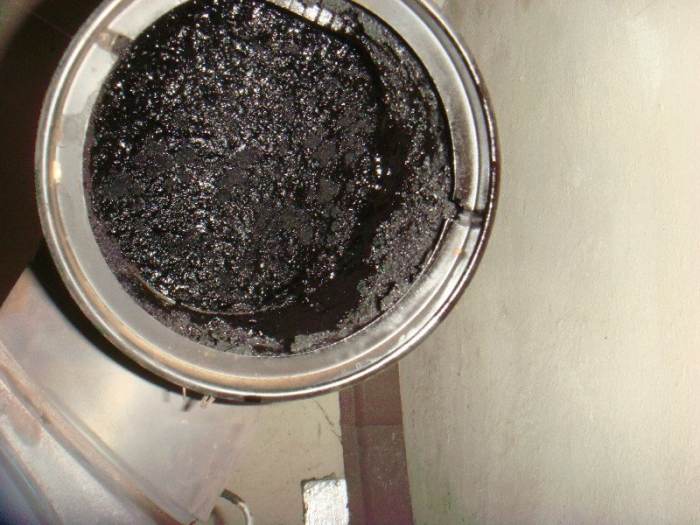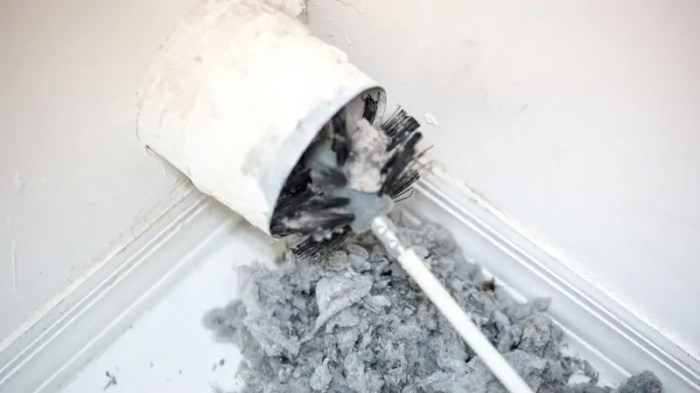What causes soot buildup in the heat exchanger and vent? Soot buildup is a common problem that can occur in heat exchangers and vents, leading to reduced efficiency and increased fire risk. This buildup is caused by incomplete combustion, which produces soot particles that can accumulate on surfaces within the heat exchanger and vent.
The factors contributing to soot buildup include the type of fuel used, the air-to-fuel ratio, and the design of the heat exchanger and vent. Incomplete combustion occurs when there is not enough oxygen available to completely burn the fuel. This can be caused by a number of factors, including a clogged air filter, a faulty burner, or a poorly designed heat exchanger.
Factors Contributing to Soot Buildup in Heat Exchangers
Soot buildup in heat exchangers can be attributed to several factors, primarily related to combustion processes and system design. Incomplete combustion, inadequate air-to-fuel ratios, and the type of fuel used all play significant roles in soot formation and accumulation.
Incomplete Combustion
Incomplete combustion occurs when there is insufficient oxygen available to completely oxidize the fuel. This can result in the formation of carbon particles, which contribute to soot buildup. Factors that can lead to incomplete combustion include:
- Improper burner adjustment
- Insufficient air supply
- Poor fuel quality
Fuel Type
The type of fuel used can also impact soot formation. Fuels with higher carbon content, such as coal and heavy oils, tend to produce more soot than cleaner fuels like natural gas.
Air-to-Fuel Ratio
The air-to-fuel ratio is crucial in preventing soot buildup. An optimal ratio ensures complete combustion, minimizing the formation of carbon particles. Deviations from the ideal ratio, either too lean (excess air) or too rich (insufficient air), can result in incomplete combustion and increased soot production.
Soot Formation and Deposition in Vents: What Causes Soot Buildup In The Heat Exchanger And Vent

Soot formation in vents is a result of incomplete combustion in the heat exchanger. The soot particles are then transported through the vents by the exhaust gases.
Soot Formation and Transport
During incomplete combustion, carbon particles are formed and carried by the exhaust gases. As the gases cool down in the vents, the carbon particles condense and agglomerate, forming soot deposits.
Factors Influencing Soot Deposition Patterns
The deposition of soot in vents is influenced by several factors:
- Vent geometry and design
- Gas flow patterns
- Soot particle size and shape
Soot particles tend to accumulate in areas with low gas velocity, such as bends and elbows in the vents.
Impact on Ventilation Efficiency
Soot buildup in vents can obstruct airflow, reducing the efficiency of the ventilation system. This can lead to poor indoor air quality, increased energy consumption, and potential safety hazards.
Consequences of Soot Accumulation

Soot accumulation in heat exchangers and vents can have several adverse consequences, impacting system performance, safety, and health.
Reduced Heat Transfer
Soot deposits on heat exchanger surfaces act as an insulating layer, reducing the efficiency of heat transfer. This can lead to higher energy consumption and reduced system performance.
Increased Fire Risk
Soot is a highly flammable material. Excessive soot buildup in heat exchangers and vents can increase the risk of fire, especially if there are ignition sources nearby.
Vent Blockages
Soot accumulation in vents can lead to blockages, obstructing the flow of exhaust gases. This can cause backdrafting, where exhaust gases are forced back into the living space, posing health hazards.
Industries and Applications at Risk, What causes soot buildup in the heat exchanger and vent
Soot buildup is a significant concern in industries and applications that involve combustion processes, such as:
- Power plants
- Industrial furnaces
- Residential heating systems
Mitigation Strategies for Soot Buildup

Several strategies can be implemented to mitigate soot buildup in heat exchangers and vents, ensuring efficient operation and reducing safety risks.
Design Considerations
Heat exchanger design should prioritize minimizing soot formation and deposition. This includes:
- Optimizing burner performance
- Ensuring proper air-to-fuel ratio
- Selecting appropriate materials and coatings
Maintenance Procedures
Regular maintenance is crucial for preventing excessive soot buildup. This involves:
- Cleaning and inspecting heat exchangers
- Inspecting and cleaning vents
- Monitoring combustion efficiency
Soot Suppressants and Additives
Soot suppressants or additives can be used to reduce soot formation. These chemicals are typically added to the fuel or injected into the combustion process.
Case Studies and Real-World Examples
Numerous case studies and real-world examples highlight the consequences of soot buildup in heat exchangers and vents.
Case Study: Power Plant Soot Buildup
A power plant experienced reduced heat transfer efficiency and increased fire risk due to excessive soot accumulation in the heat exchangers. The issue was traced to incomplete combustion caused by improper burner adjustment. After optimizing burner performance and implementing regular maintenance procedures, soot buildup was significantly reduced, improving system performance and safety.
Case Study: Residential Furnace Soot Buildup
A residential furnace exhibited poor heating performance and increased energy consumption. Inspection revealed heavy soot deposits in the heat exchanger and vents. The cause was determined to be a lean air-to-fuel ratio, resulting in incomplete combustion. Adjusting the air-to-fuel ratio and implementing regular cleaning resolved the issue, restoring the furnace’s efficiency and reducing energy costs.
Top FAQs
What is soot?
Soot is a black substance that is produced by incomplete combustion. It is composed of tiny particles of carbon and other materials.
What are the causes of soot buildup in heat exchangers and vents?
Soot buildup in heat exchangers and vents is caused by incomplete combustion. This can be caused by a number of factors, including a clogged air filter, a faulty burner, or a poorly designed heat exchanger.
What are the consequences of soot buildup in heat exchangers and vents?
Soot buildup in heat exchangers and vents can have a number of negative consequences, including reduced heat transfer, increased fire risk, and vent blockages.
How can soot buildup in heat exchangers and vents be prevented?
Soot buildup in heat exchangers and vents can be prevented by taking steps to minimize incomplete combustion. These steps include using the correct type of fuel, maintaining a proper air-to-fuel ratio, and regularly cleaning and inspecting the heat exchanger and vent.